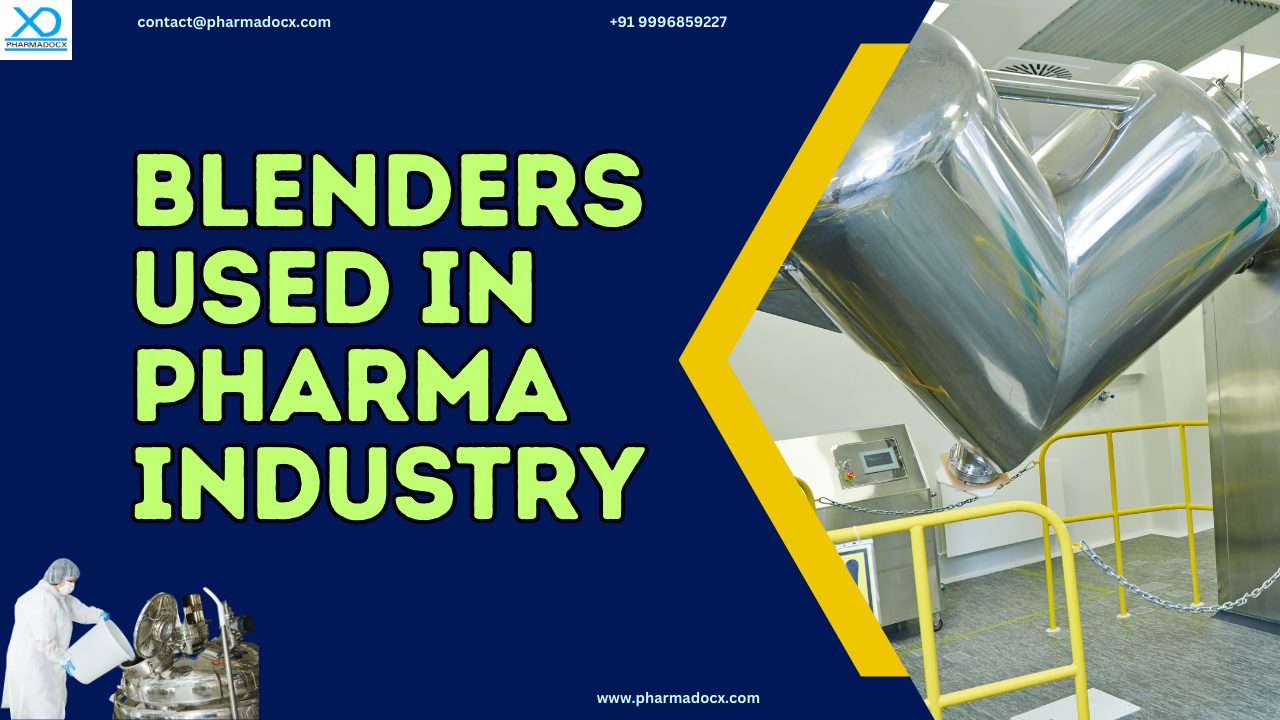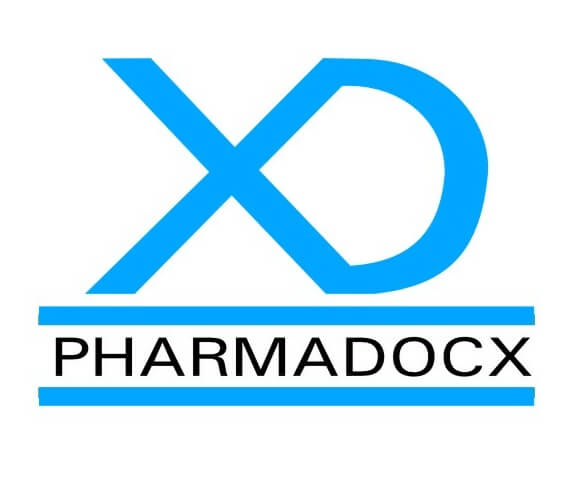Blending has a vital role in the pharmaceutical industry, as drugs are manufactured by mixing various components. It is the process of thoroughly mixing all the ingredients. Additionally, the blending has to be performed at a particular temperature either in dry or wet state. This is determined by the drug’s the chemical composition and the reactions allowed. Thus, a high-quality blender is required for homogeneous mixing of all the ingredients. Furthermore, different types of blenders are required for different blending techniques, ingredients, and the final product. In this blog, we have discussed the different types of blenders used in pharma industry. Additionally, we have provided an overview of their purposes.
Role of blenders used in pharma industry
The blender is a very important equipment used in the pharmaceutical industry. Its primary goal is to homogeneously mix active pharmaceutical ingredients and excipients. The blenders used in pharma industry can mix all the ingredients at a desired speed, temperature, and time. Moreover, the efficacy, quality, and safety of the drug depends on the homogeneous mixing of all the ingredients. Furthermore, every blender type has its own blending principle and blending technique. Thus, depending on the blending technique required, ingredients, and the final product, the blender is selected. As proper mixing of all the ingredients determines the quality of the drug, blenders have a vital role in the pharmaceutical industry.
How to choose the correct blender for your pharma company?
- Materials to be mixed: Different types of blenders used in pharma industry are required for different blending techniques and materials. Choose the blender depending on the density, particle size, and flow characteristics of the materials to be mixed. The appropriate blender will ensure thorough blending without the damaging the ingredient materials. Hence, use the ingredient materials as a parameter to choose the correct blender type for efficient and effective mixing.
- Blender quality: Check the blender quality before investing in it. The blenders should be made of robust material and have reliable motors. They should be constructed per industry regulations and have all the relevant certification. It should be able to effectively and homogenously mix all the materials. Notably, consistent and uniform blending will determine the final drug quality. Hence, thoroughly evaluate the quality of the pharmaceutical blender.
- Cost of the blender: The blender cost should fit in your budget. Cost increases with blender model feature increase. Thus, use your budget to determine which features of a blender you should prioritise. Primary features to focus on are durable construction materials, efficiency, adequate motor power, and safety certifications.
Types of blenders used in pharma industry
- Paddle blenders: These blenders are used for mixing fragile powders or granules and can perform wet and dry mixing. Notably, paddle blenders can be used for blending powders with liquids. These horizontal blenders have flat and wide paddles that are mounted on a shaft. When the paddles rotate around the horizontal shaft, it uses gravitational force to mix the raw materials. Although this is a gentle blending technique, it ensures thorough mixing. Among the blenders used in pharma industry, paddle blenders have diverse applications.
- Vertical blenders: These blenders are versatile and used for mixing powder, pellets, and granules. They are usually available in various sizes. Moreover, they have a simple design that makes it easy to maintain and operate the blenders. Complete discharge of materials is possible, as there are no bearings to support the bottom that may cause obstruction. Additionally, the blenders are easy to clean and have low risk of contamination.
- Mass blender: The mass blender is used for dry and wet mixing. Blades shaped like a paddle are placed inside the blender cabin in a horizontal manner for easy granulation. The mixer/blender cabin rotates at one speed only in a horizontal plane. The blender has a dust proof and transparent cover. An automated safety catch is in place to switch off the mixer when the blender cover is opened. Notably, the mass blender is specifically used for tablet granulation.
- Octagonal blender: This blender is primarily used for blending dry solids and semi-solid materials. The blender has an eight-sided or an octagonal shape that helps with thorough blending. By rotating the octagonal container, the machine can mix the materials in an efficient manner. When the blender is filled to two-thirds of its capacity, it has maximum efficiency. Notably, it is simple to clean on site and has very little material wastage. The octagonal blender is suitable for gentle mixing of powder or dry granules. Moreover, the blending technique used by the octagonal blende does not cause too much stress on the particles. This reduces the risk of particle breakage.
- V blender: The v blender is usually used for mixing dry powder constituents. It consists of two cylindrical shells wielded at an angle. The blender has a manual rotation system, simple design, and is easy to clean. The v blenders are in high demand in the pharmaceutical industry. They are easy to charge and unload. Moreover, the v blenders are easy to maintain and has minimal contamination issues.
- Double cone blender: The double cone blender is commonly used for dry powder, mixing granules, heavy and abrasive materials. It is among the popular blenders used in pharma industry, owing its properties of effective mixing and high uniformity of blends. The cone shape and multi-shear deflector plates are used for uniform mixing by fast rotation and flipping. The blender design helps with the easy removal of materials after they have been mixed. Fitted with a timer function, the blender helps achieve precise mixing. Furthermore, additional paddle-shaped baffles can be fixed on the shaft for improved blending. As it gently mixes particles, the double cone blender is suitable for delicate mixing tasks. Notably, the well-balanced cone and fire proof motor minimizes accident risks. Furthermore, the blender generates very low heat that protects sensitive materials from getting damaged. Thus, the double cone blender can be used for mixing heat sensitive materials.
- Ribbon blender: These blenders are used for mixingsolid materials, such as powders and other fluids having low shear capacity. Notably, they can even handle liquids and gas streams. This a light duty versatile blender. Additionally, the cooling jacket can be used to increase its application in the pharm industry. The blender has a double helical ribbon agitator that rotates inside it and has belt driven power transmission. Moreover, the blender has been designed to maximise efficiency. It is wear and corrosion resistant. Furthermore, while using this blender, materials are easy to dispatch.
Choosing the right pharmaceutical blender for your pharma company
Quality, safety, and efficacy of drugs are the key focus of the pharmaceutical industry. High-quality blenders are required to ensure consistent and homogenous blending of all the ingredients. The properly blended ingredients will be used for further processing followed by capsule filling and tablet compression. Hence, it is vital to invest in a good quality blender. The blender should have robust construction, precision engineering, and reliable motors. Additionally, it should have safety mechanisms, such as overload protection, and other features to prevent machine damage. These features are required to increase the lifetime of the machine. Moreover, the blenders should have proper certification and comply with industry and GMP guidelines.
Therefore, you should carefully choose the pharmaceutical blender for your pharma company. In this blog, we have detailed the different types of blenders used in pharma industry and their application. Blenders have a vital role in the pharm industry. Hence, properly research and invest on a good quality pharmaceutical blender. We at Pharmadocx Consultants provide factory layout and design and machine selection service. Email at [email protected] or call/Whatsapp on 9996859227 and we will guide you in choosing the correct equipment for your factory.





